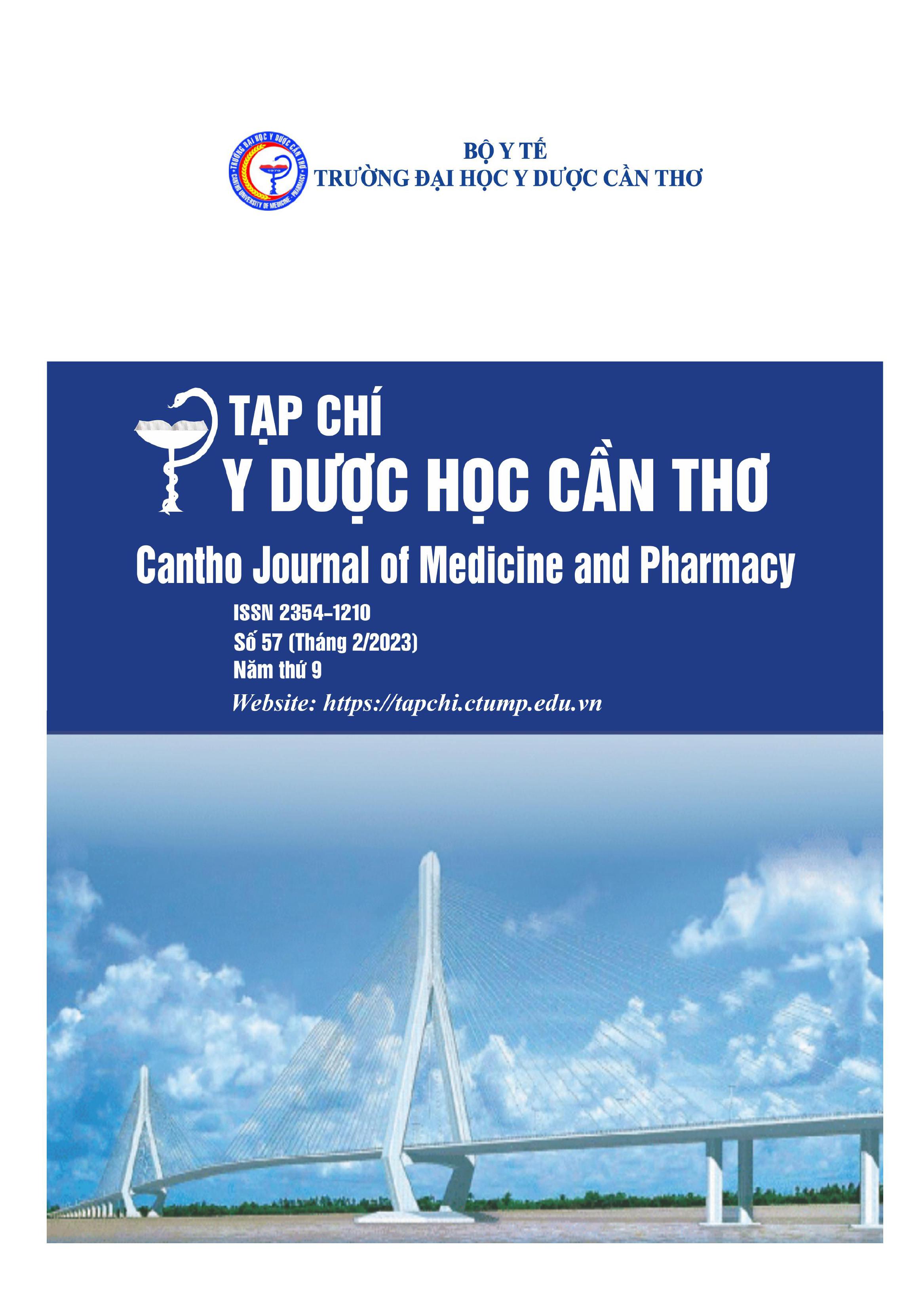STUDYING DEEP LEARNING MODELS TO DETECT AND CLASSIFY COMMON FOCAL LIVER LESIONS ON CT IMAGES
Main Article Content
Abstract
Background: The necessary of early detection, classification of liver lesions and the researching for the application of deep learning models to the field of medical image. Objectives: Collect dataset, build, train the deep learning model Faster R-CNN to detect and classify common focal liver lesions on CT images; Test and evaluate the effectiveness of this model according to the criterias of time and accuracy. Materials and methods: The abdominal contrast-enhanced CT image dataset with liver lesions including cyst, hemangioma, and hepatocellular carcinoma; Applying Faster R-CNN model to the detection and classification of lesions. Results: The dataset had been collected at Can Tho University of Medicine and Pharmacy Hosital included 51 patients who had common focal liver lesions, with 2828 images, 2836 lesion areas that were identified by radiologists, of which 11 patients belonged to the liver cyst group (440 lesion areas), 18 patients belonged to the hemangioma group (648 lesion areas), 21 patients belonged to the hepatocellular carcinoma group (174 lesion areas) and 01 patient had both cyst and hemangioma; Faster R-CNN model resulted in mAP accuracy of 94%, training time of 583 minutes and processing time of 0.13 seconds. Conclusion: The collected data set is the foundation for further studies; The Faster R-CNN model had short training time, fast processing time and high accuracy, it was suitable and could be applied to deploy real-life applications.
Article Details
Keywords
Machine learning, Deep learning, Faster R-CNN, CT Scan, Liver disease
References
2. Bisong, E., Google colaboratory, in Building Machine Learning and Deep Learning Models on Google Cloud Platform. 2019, Springer. pp. 59-64.
3. Dillon, J.V., et al., Tensorflow distributions. arXiv preprint arXiv:1711.10604, 2017.
4. He, K., et al. Deep residual learning for image recognition. in Proceedings of the IEEE conference on computer vision and pattern recognition. 2016.
5. Lee, S.-g., et al. Liver lesion detection from weakly-labeled multi-phase CT volumes with a grouped single shot multibox detector. in International Conference on Medical Image Computing and Computer-Assisted Intervention. 2018. Springer.
6. Liang, D., et al. Residual convolutional neural networks with global and local pathways for classification of focal liver lesions. in Pacific Rim International Conference on Artificial Intelligence. 2018. Springer.
7. Lin, T.-Y., et al. Microsoft coco: Common objects in context. in European conference on computer vision. 2014. Springer.
8. Ren, S., et al., Faster r-cnn: Towards real-time object detection with region proposal networks. arXiv preprint arXiv:1506.01497, 2015.
9. Sun, C., et al., Automatic segmentation of liver tumors from multiphase contrast-enhanced CT images based on FCNs. Artificial intelligence in medicine, 2017. 83: pp. 58-66.
10. Zhou, J., et al., Automatic Detection and Classification of Focal Liver Lesions Based on Deep Convolutional Neural Networks: A Preliminary Study. Frontiers in oncology, 2021. 10: pp. 3261.


